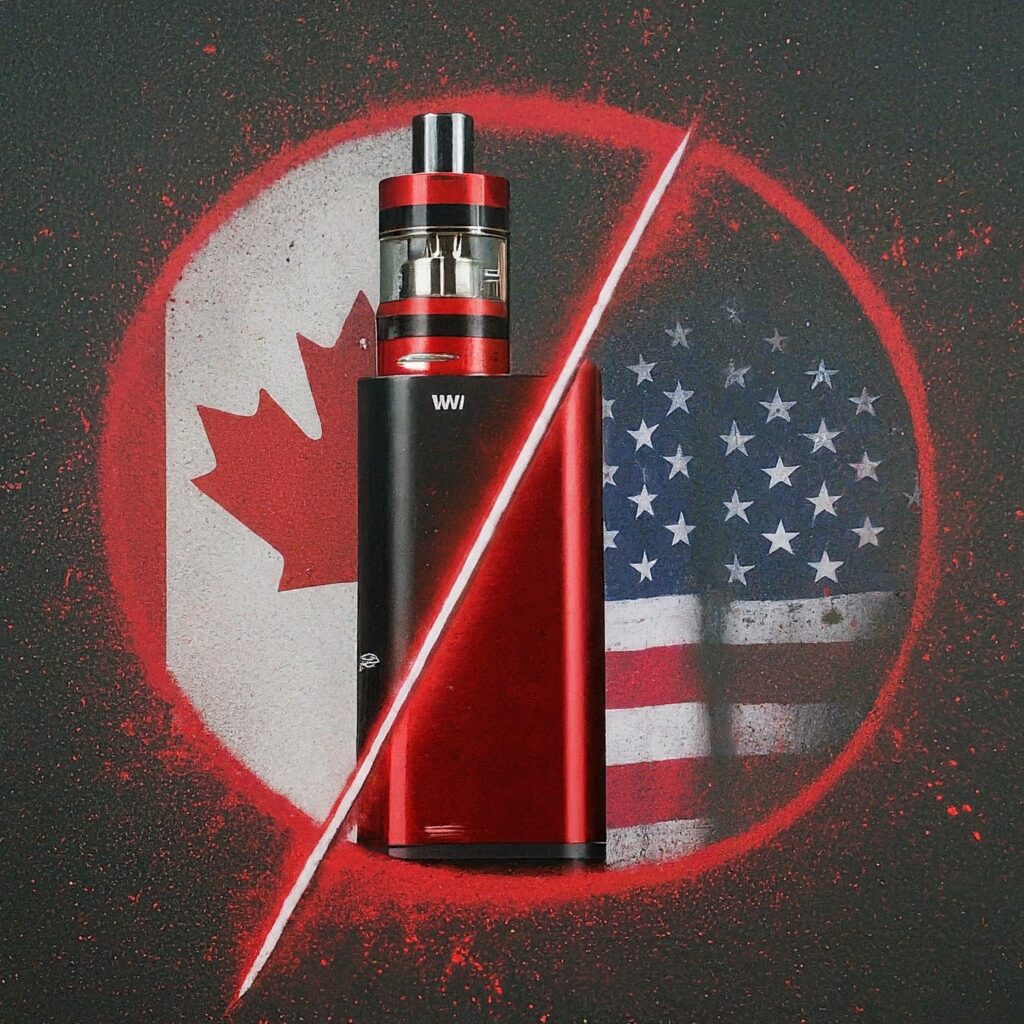With the New Year comes a slew of changes in the form of new vaping regulations in Canada and the United States alike. As of January 1st, there are new considerations for you to take into account if you use a vape regularly and these changes come with new difficulties for many Canadian and U.S. citizens.
In order to help you stay on top of the new laws, Haze Smoke Shop did some digging and is here to offer you a full explanation of the new vaping regulations. It’s important to note that electronic cigarettes are still legal to use in both countries, but there are some differences in legislation depending on your province.

Canadian Vaping Regulations in 2020
As of January 1st, the Canadian federal government and certain provinces have imposed restrictions or bans surrounding the use of vapes or the sale of vapes and vaping accessories within the country. Markedly, these new laws concern everything from:
1. Areas with smoking bans also ban vaping use and sales.
2. Use of vapes in store such as speciality retailers
3. Restrictions on advertising
4. Sponsorship bans
5. Ban on applying tobacco brand names to vapes
6. Display bans
7. Authority to restrict flavours
In order to best prepare you for what to expect the next time you go to purchase a vape or vaping accessory, we will offer a breakdown of these new vaping regulations according to province.
Ontario
As of November 2019, Ontario sees a change in vaping regulations regarding the proposal of an advertising ban for vaping products in convenience stores and gas stations. The new Tobacco and Vapour Products Control Act restricts vaping advertisements to specialty vaping stores. Moreover, these stores can only admit customers who are 19 years of age or older.
Alberta
Although Alberta’s current tobacco laws don’t address vaping, proposed revisions to the Tobacco and Smoking Regulation Act aim to regulate vaping products. This review began in November of 2019 and will, most likely, focus on the advertisement of vaping products, similarly to the proposal in effect in Ontario.
Nova Scotia
Nova Scotia is the setting for the strongest regulatory measures taken against the use of vaping products in the country. Alberta proposed legislation, originally set to take effect on April 1, 2020, would have completely banned vaping products and flavoured e-liquids in the province. Of all of the new regulatory standards set in Canada in 2020, this will be the most severely impactful.
Vaping Regulations in British Columbia
British Columbia is now under effect of some fairly big changes in terms of vaping regulations. As of January 1st, 2020, a proposed increase in sales tax on vaping products is in effect. This regulation will include an increase in sales tax from 7% to 20%. There is also a consideration to limit vape flavors outside of tobacco to specialty vape shops only. Finally, these regulatory changes also include a legal cap on the available level of nicotine to 20mg/mL.
Vaping Regulations in Quebec
Quebec’s Tobacco Control Act involves a number of regulations on vaping products in the province. For one, sale and supply to minors under the age of 18 is strictly prohibited and photo ID is required for purchase regardless of age. Sales are also prohibited anywhere where tobacco sales are also banned as well as use of vaping products anywhere where smoking is prohibited. The law restricts outdoor signage advertising vaping products. Only specialty shops are allowed to advertise the availability and price of vaping products.
Vaping Regulations in Prince Edward Island
Under Prince Edward Island’s Tobacco and Electronic Smoking Device Sales and Access Act, which is currently awaiting royal assent, seeks to raise the minimum purchase age to 21 rather than 19. The law also aims to restrict where vaping products can be sold as well as banning the sale of specific flavors.
TVAPE survey
Despite these proposed limitations, according to a TVAPE survey on cannabis consumption during COVID-19, 54% of Canadians surveyed have been consuming more cannabis during the pandemic and vaporizer use has jumped by 30%. The Act of smoking cannabis has taken a dive of almost 57%.
New Vaping Regulations in the United States
Within the United States, there are also major changes being brought about in terms of vaping regulations. On December 20, 2019 the President of the United States signed legislation that amended the Federal Food, Drug, and Cosmetic Act, therefore raising the purchase age for tobacco and vaping products from 18 to 21 years old. As of January 1st, 2020, it is now illegal to sell tobacco and/or vaping products to anyone below the age of 21 years old in the country.
Another major change in vaping regulations to be effective as of January of this year is an enforcement policy by the FDA on certain unauthorized flavoured cartridge-based vaping products, including flavours that appeal to children. The policy bans certain cartridge-based flavors in the country, but exempts flavored products manufactured for open-tank systems sold in vape shops. This focus on cartridge-based vaping products is due to the fact that they were considered to be the most popular among the country’s youth.
Another change that sellers should take note of is that, from this point on, any manufacturers that wish to sell vape products must submit an application directly to the FDA for premarket authorization of their products.

